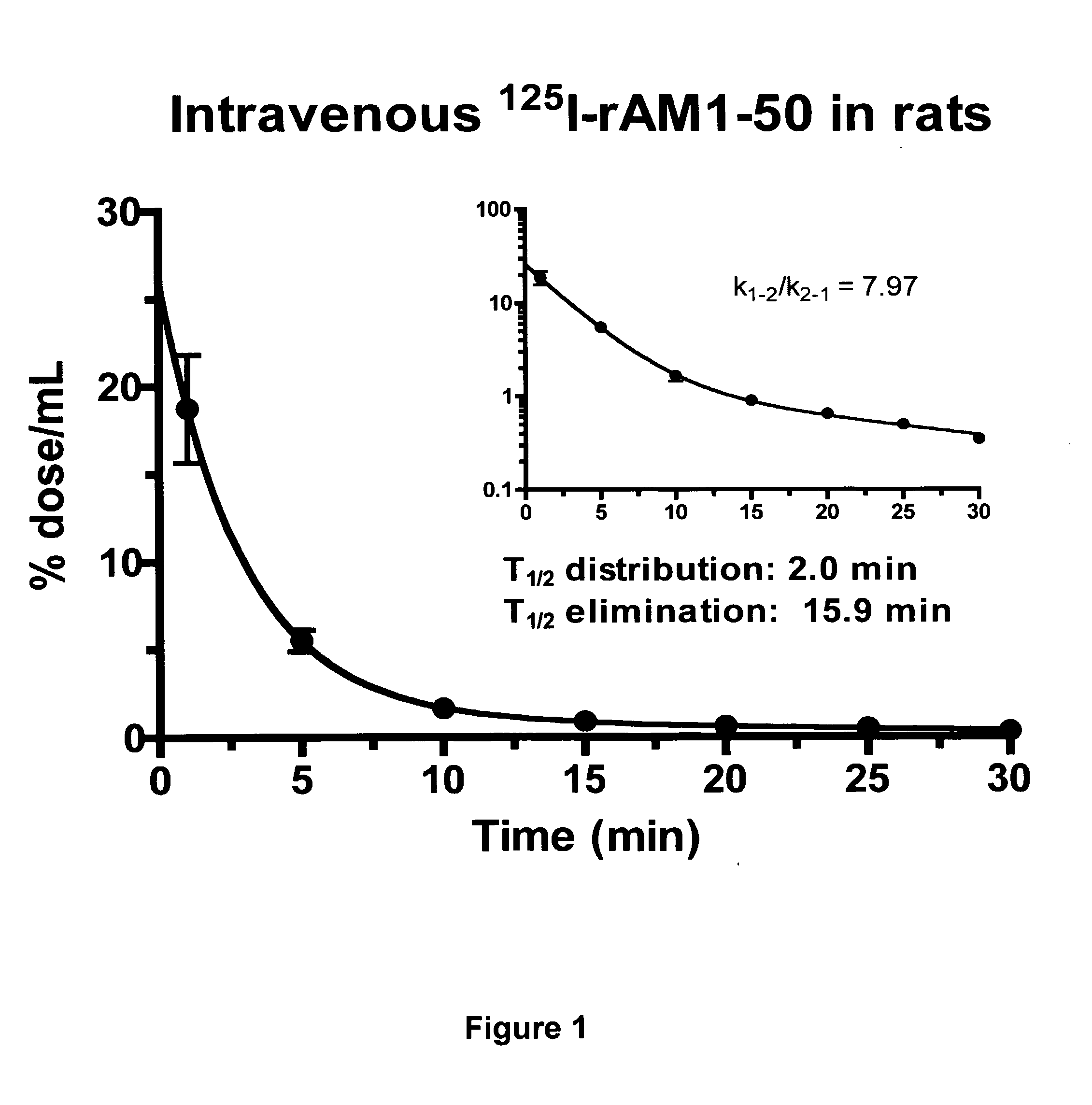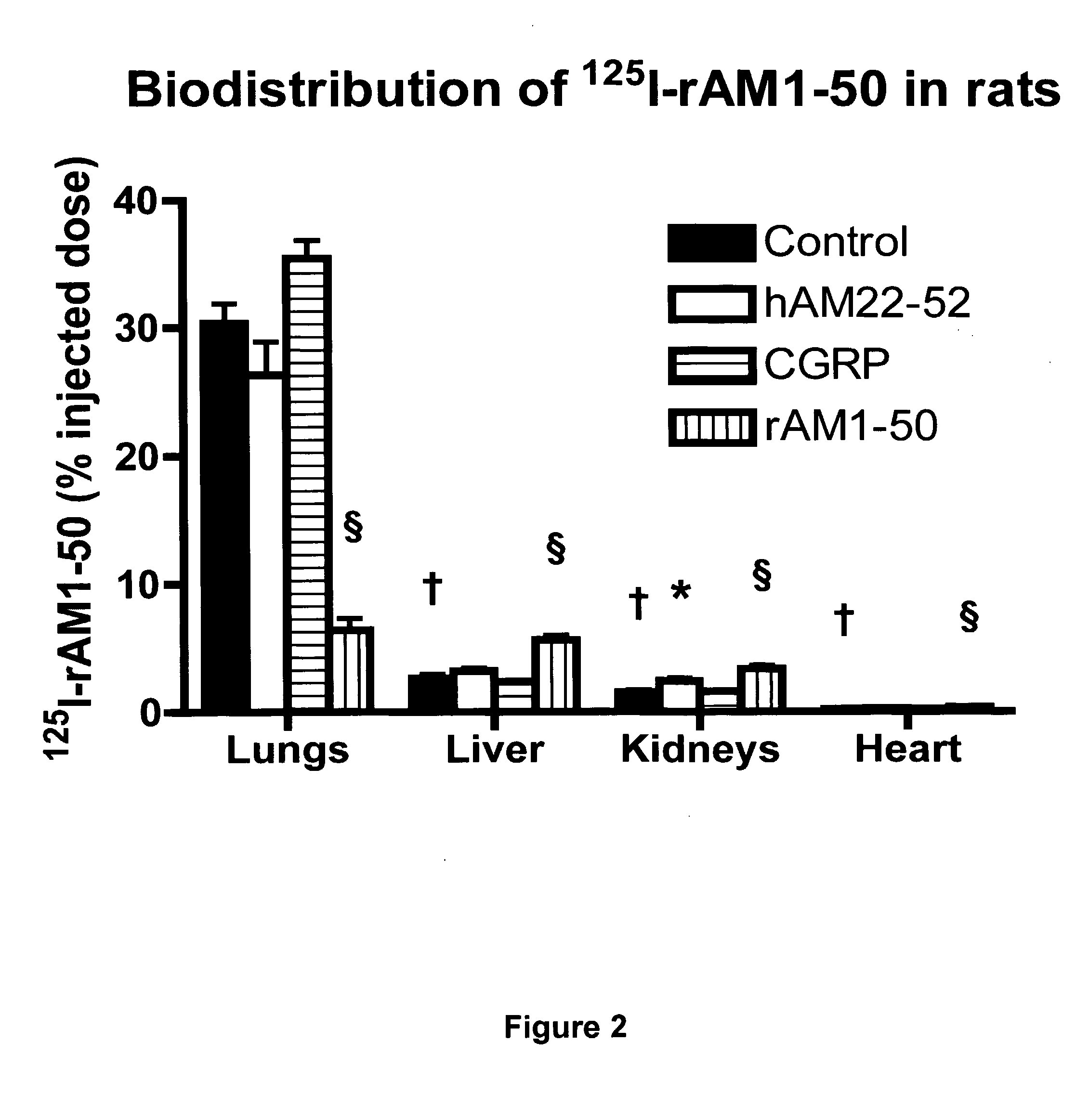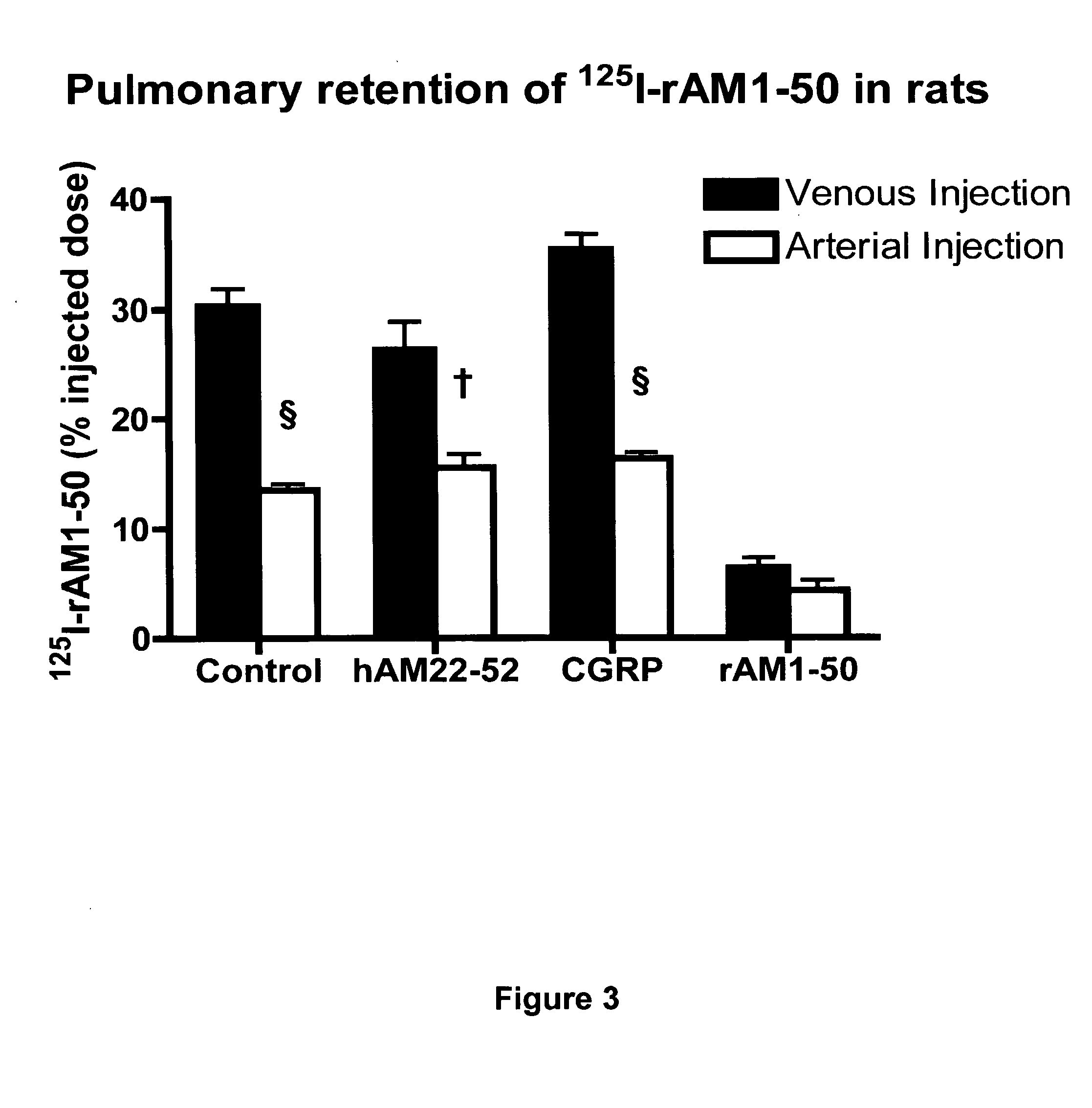Labelled Adrenomedullin Derivatives and Their Use for Imaging and Therapy
a technology of adrenomedullin and derivatives, which is applied in the field of labelled compounds for imaging or therapy, can solve the problems of inability to image the small pulmonary circulation beyond the obstruction point, limit the sensitivity of this substance to detect small vascular defects, and achieve the effect of improving the specificity and efficacy of thrombolytic therapy and reducing the risk of major bleeding
- Summary
- Abstract
- Description
- Claims
- Application Information
AI Technical Summary
Benefits of technology
Problems solved by technology
Method used
Image
Examples
example 1
A Process to Produce 99mTc-Labelled AM
[0050]In this example, the adrenomedullin produced is a human adrenomedullin having the sequence:
(SEQ ID 1)H-Tyr-Arg-Gln-Ser-Met-Asn-Asn-Phe-Gln-Gly-Leu-Arg-Ser-Phe-Gly-Cys-Arg-Phe-Gly-Thr-Cys-Thr-Val-Gln-Lys-Leu-Ala-His-Gln-Ile-Tyr-Gln-Phe-Thr-Asp-Lys-Asp-Lys-Asp-Asn-Val-Ala-Pro-Arg-Ser-Lys-Ile-Ser-Pro-Gln-Gly-Tyr-CONH2
[0051]However, it is within the scope of the invention to use any other suitable adrenomedullin, such as rat adrenomedullin or derivatives of the CT / CGRP / AMY peptide family, as well as their modified products such as those obtained after N- and / or C-terminal substitution.
[0052]A method for synthesizing an a CT / CGRP / AMY peptide suitable for use with the present invention, such as for example adrenomedullin, was performed as follows. The following commercial N-α-fluorenylmethyloxycarbonyl [Fmoc]-L-amino acids were used: Alanine [Fmoc-Ala], Arginine-Nω-(2,2,4,6,7-pentamethyldihydrobenzofuran-5-sulfonyl) [Fmoc-Arg(Pbf)], Asparagine-N...
example 2
Pharmacokinetics of 125I Labelled AM in Rats
[0064]Introduction
[0065]This example was designed to evaluate the biodistribution, pharmacokinetics and multiorgan clearance of AM in rats in vivo. Quantification of single-pass pulmonary kinetics of AM and its mechanism was characterized further in dogs using the single bolus indicator-dilution technique.
[0066]Methods
[0067]All experimental procedures were performed in accordance with the regulations and ethical guidelines from Canadian Council for the Care of Laboratory Animals, and received approval by the Animal Ethics and Research Committee of the Montreal Heart Institute. Male Sprague-Dawley rats (Charles River), weighing between 400-450 g, were anaesthetized by an initial intramuscular dose of xylazine (10 mg / kg of body weight) and ketamine (50 mg / kg of body weight), followed by an intra-peritoneal injection of heparin (2000 units; Sigma). Catheters were inserted into the right carotid artery and jugular vein. Heart rate and systemic...
example 3
Pharmacokinetics of 99mTc Labelled AM and Imaging Using Same
[0097]Widely accessible in most nuclear medical centres via 99Mo / 99mTc generator, technetium-99m shows suitable nuclear properties for nuclear imaging with γ-emitting of 140.5 keV and a short half-life of 6.01 h (34). To avoid strong perturbation of hAM1-52 chemical structure and, consequently, the loss of its biological properties during radiolabelling with 99mTc, a successful procedure, called ‘bifunctional approach’, has been proposed. This strategy consists of tethering a strong chelating group for the radionuclide to a point of the peptide that is irrelevant for preserving its biological properties (23, 26, 31). Thus, we developed chelated radiolabelled adrenomedullin derivatives, preferably a chelated hAM1-52 derivative using diethylenetriaminepentaacetic acid (DTPA) radiolabelled with 99mTc.
[0098]The present example was designed to systematically evaluate the biodistribution, pharmacokinetics and multi-organic cleara...
PUM
| Property | Measurement | Unit |
|---|---|---|
| flow rate | aaaaa | aaaaa |
| flow rate | aaaaa | aaaaa |
| body weight | aaaaa | aaaaa |
Abstract
Description
Claims
Application Information
 Login to View More
Login to View More - R&D
- Intellectual Property
- Life Sciences
- Materials
- Tech Scout
- Unparalleled Data Quality
- Higher Quality Content
- 60% Fewer Hallucinations
Browse by: Latest US Patents, China's latest patents, Technical Efficacy Thesaurus, Application Domain, Technology Topic, Popular Technical Reports.
© 2025 PatSnap. All rights reserved.Legal|Privacy policy|Modern Slavery Act Transparency Statement|Sitemap|About US| Contact US: help@patsnap.com



